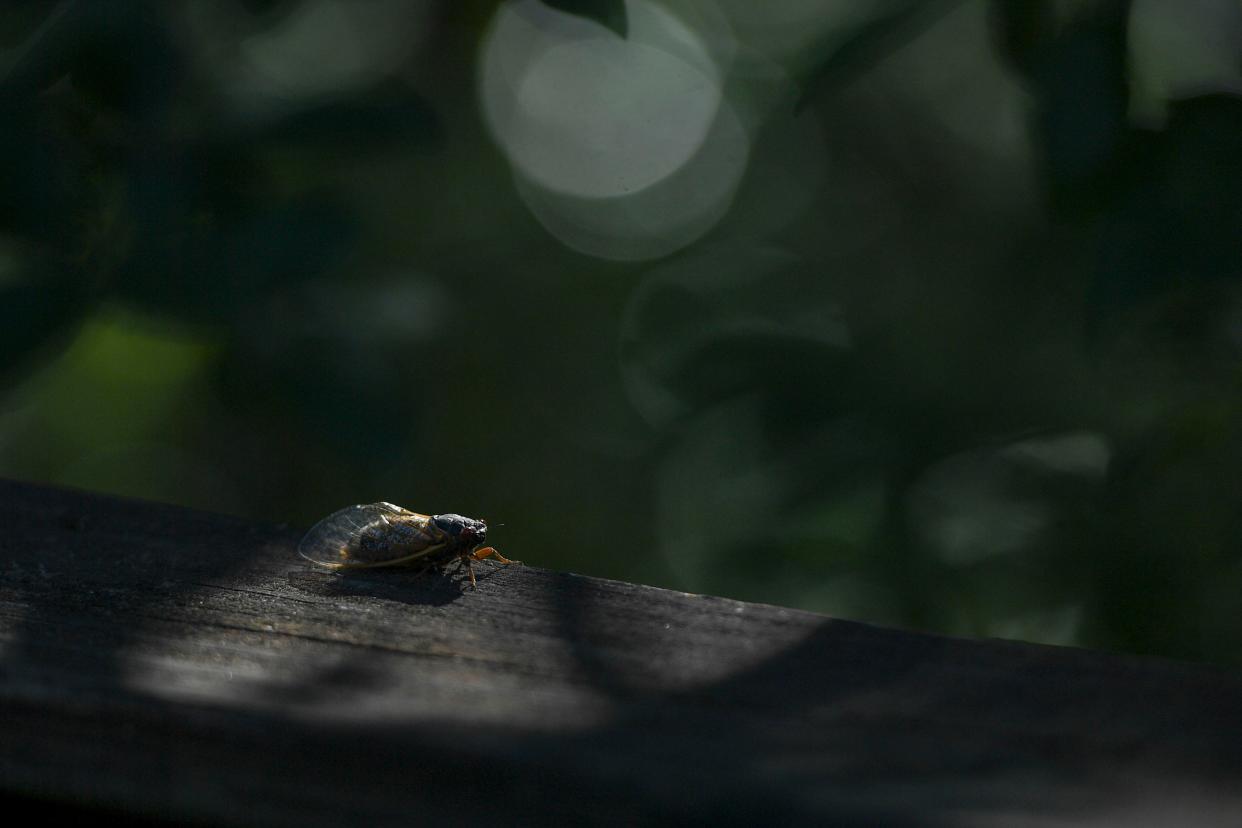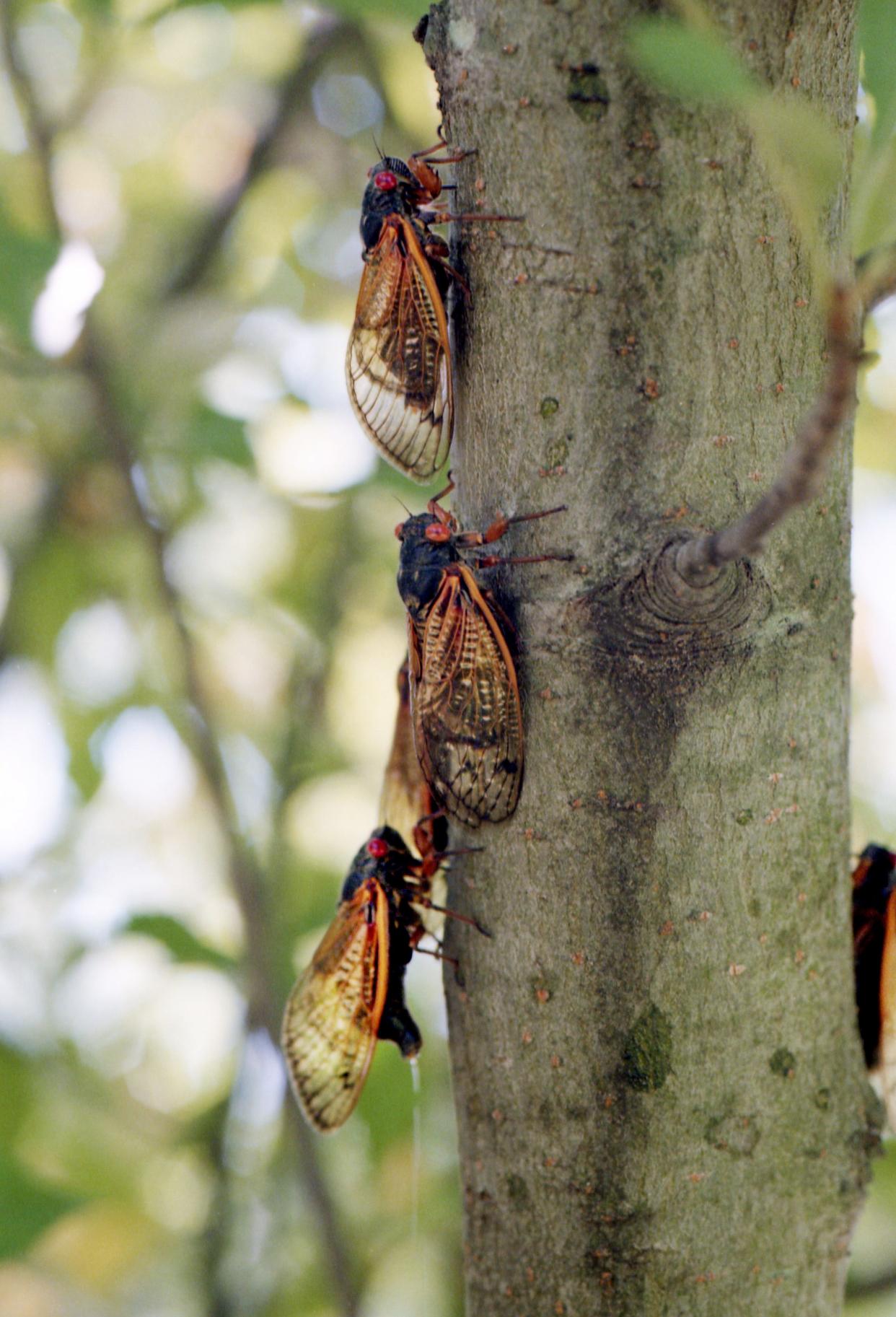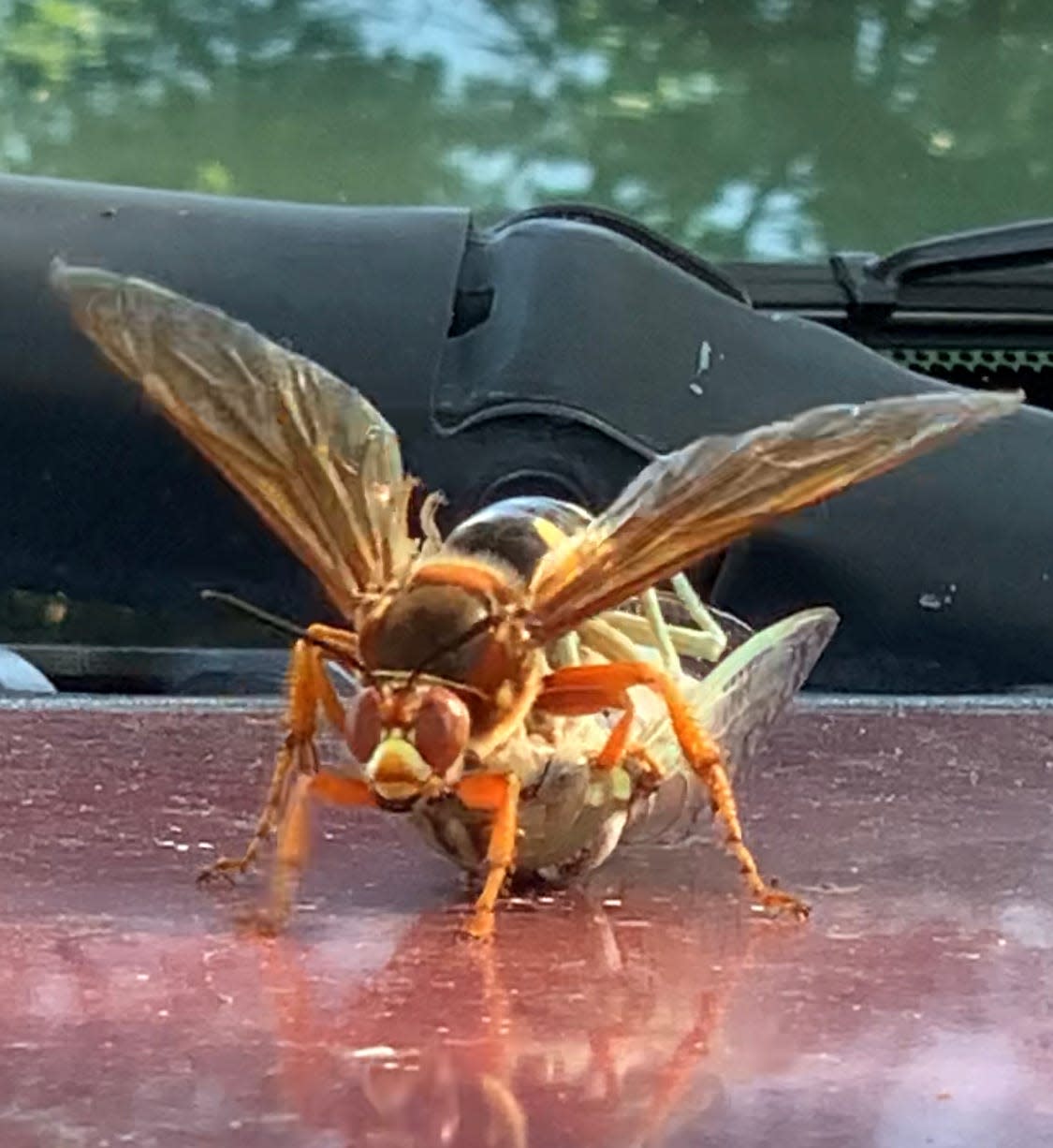Cicadas are emerging in Upstate SC. What to know about Brood XIX, 'zombie' cicadas
This year's highly anticipated bugged out event is here, and it's only happening in certain parts of the U.S.
Brood XIX are emerging after spending 13 years underground. Brood XIX cicadas, also known as the Great Southern Brood, have been spotted by residents throughout the Upstate, whether that be in your backyard, forest, or local park.
Brood XIII is also emerging after spending 17 years down under, but they will only be seen in parts of the Midwest.
The last time these two broods emerged together was back in 1803. Altogether, a trillion cicadas are expected to emerge.
Read on to learn about these cicadas, and to learn about the cicada "zombie" fungus and cicada female wasp killer.
What are cicadas, and what do they look like?
According to Clemson University, cicadas are thick-bodied, plant-feeding insects that can be found clinging to trees and vegetation. They measure 1-2 inches long and have compound eyes in shades of black and red, although some may emerge with blue or white eyes. Having two eyes is better than one, but cicadas are lucky enough to have three called the ocelli, which are located in the middle of their head. The wings of the insects are thick with prominent veins, and their antennae are small.
Cicadas are known for their loud, shrill noise and exoskeletons (discarded shells). Along with hemipterans like leafhoppers and spittlebugs, cicadas belong to the suborder Auchenorrhyncha. Their presence can be found worldwide. In the U.S., they live in the eastern and southern parts of the country.

Annual cicadas and periodical cicadas are oftentimes confused with one another. In South Carolina, annual cicadas, which are black and green, can be heard every year during the summer. Periodical cicadas are smaller at 1.5 inches. They are black with red eyes and orange veins within their wings, only emerging every 13-17 years. Broods XIX and XIII are both periodical cicadas.
"People hear the annual cicadas every year," said Eric Benson, Clemson University's extension entomologist. "In the summertime when it's hot, dog day cicadas can be heard. In the late afternoon or evening, you'll hear that whining in the trees. Those are the cicadas, the males calling to the females. But you know, that may be tens of hundreds (of cicadas), not tens of thousands or millions. It's just the sheer number that makes them so loud."
When will Brood XIX emerge?
Brood XIX is expected to emerge in mid-April to mid-May. The Upstate will be the only part of South Carolina to experience the phenomenon this year. Some Upstate residents are seeing the cicadas emerge already.
"Where we see these cicada populations are usually in natural areas, protected areas, parks. Those are the most likely places where people are going to see them." Benson said. "In South Carolina, the data shows that (we will see the cicadas) pretty much from Columbia up through the Upstate and into the mountains."

How long will the cicadas be around?
Due to the cicada's brief life span, their time above ground will not last long. In the meantime, the cicadas will "party," or mate.
After emerging, male cicadas will sing mating songs to female cicadas, who will flick their wings in response, according to the Smithsonian. The two will then mate, and the female cicada will lay her eggs in a groove she will etch into the bark of a tree limb.
Once male and female cicadas have mated and the female has laid its eggs, USA TODAY reports the insects will die after spending only five weeks above ground, according to National Geographic. In other cases, adult periodical cicadas live for just three or four weeks, according to Smithsonian Museum of Natural History.
Freaky fungus transforms cicadas into sex crazed 'zombies'
Zombie flicks are something horror fans watch with friends for Friday night fun. But did you know that for cicadas, becoming a zombie is not so far from the imagination?
According to Scientific American, a diversity of parasitic fungi have evolved alongside an estimated 3,000 species of cicadas worldwide. One species, known as "Massospora cicadina," only infects periodical cicadas like Brood XIX and XIII.
For the past 17 years, M. cicadina's spores have lived in the soil, awaiting the periodical cicadas. Insects become infected by the fungi when they make contact with the spores on their journey to the surface. During the first seven to 10 days, the fungus grows as its host molts into an adult. In the beginning, the growing fungus cannot be seen. As the infection progresses, males' abdominal plates will begin to fall off, and a chalky white plug made of fungal spores will show. The spores spread primarily through mating attempts, making the fungi similar to a sexually transmitted disease, according to Scientific American.
Some females will fall for the male's mating song, becoming infected. Her eggs will also fail to be fertilized due to the male's missing genitals. Strong muscular tissue may keep the abdomen intact since females rely on the area to lay eggs. However, she still risks the chance of her fungus infected genitalia breaking off, the male carrying it away.
To make this bugpocalypse even worse, infected males who flick their wings like a female can attract other males who attempt to mate, infecting them in the process. Talk about getting catfished.
What to know about the female cicada killer wasp
Cicada survivors of the zombie outbreak will also need to keep their beady little eyes peeled for the female cicada wasp killer.
Purdue University describes cicada killers as "large, ominous looking wasps that evoke a good deal of fear among people. They look like a giant hornet or huge yellow-jacket and are somewhat aggressive." Although their appearance may sound frightening, the cicada killer is a solitary wasp, contrasting from a social wasp. This means they are unlikely to sting as long as they are stayed away from and not interfered with.
The majority of the wasps are males who guard the nesting area, and they may dive bomb or fly right in front of your face. If this happens to you while lounging in the sun, a male in close proximity would not sting. Females will sting if mishandled, according to Purdue University.
Upon digging a few tunnels, a female wasp will hunt down a cicada, inflicting a powerful and paralyzing (but not deadly) sting. She will then drag the cicada to the burrow and shove it into a small nursery cell off the main tunnel, laying her eggs within it and blocking the chamber off. Within two to three days, the eggs will hatch, the larva burrowing into the carcass. This begins the process of devouring the immobilized cicada. They will then overwinter in their cells, emerging as adults next July. In the period between mating and mid-August, the new adults will repeat the cycle of capturing the cicadas, dying off in September.

Nina Tran covers trending topics. Reach her via email at ntran@gannett.com
This article originally appeared on Greenville News: Cicadas are emerging in SC: Brood XIX now; look out for 'zombies'
